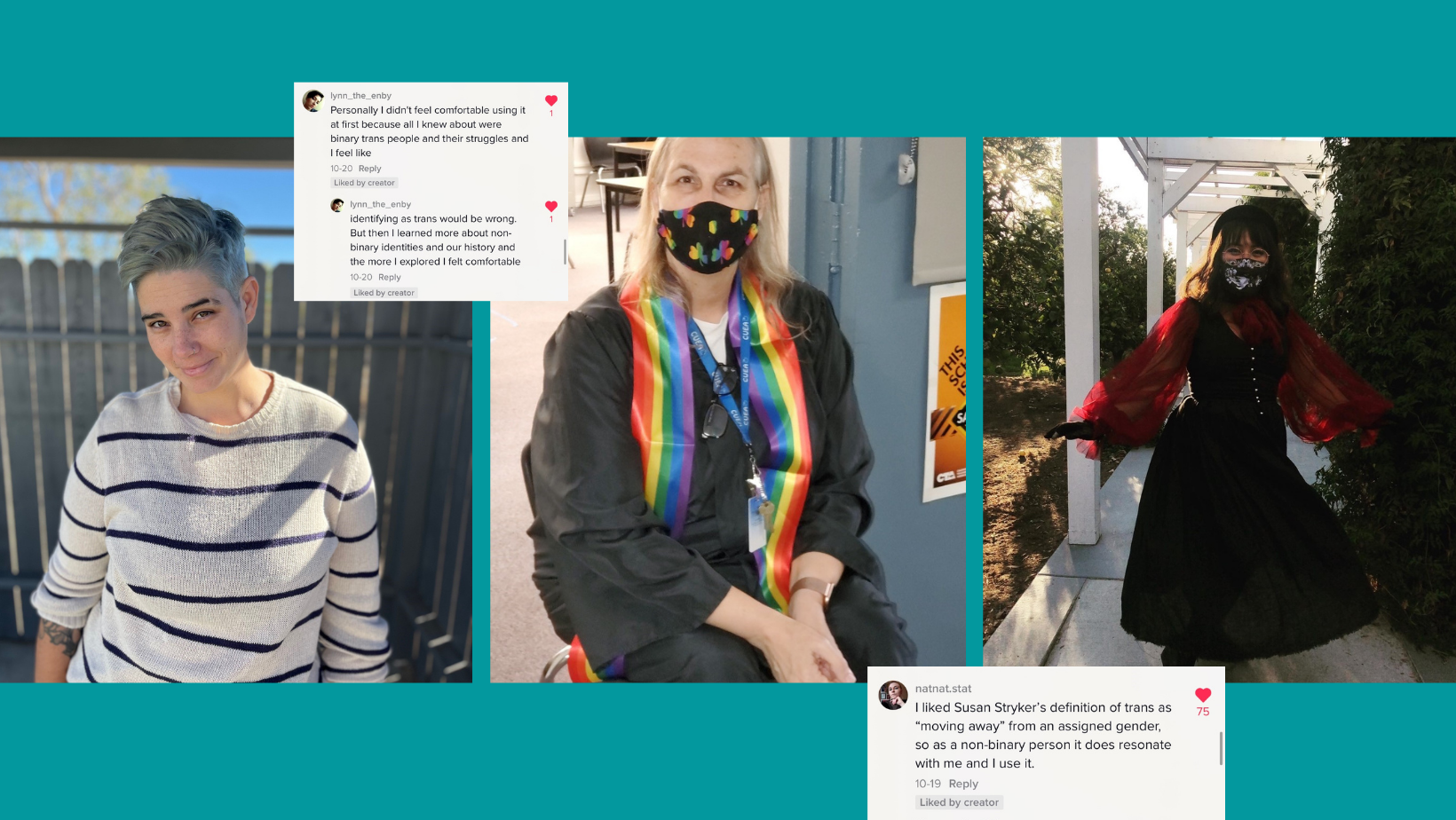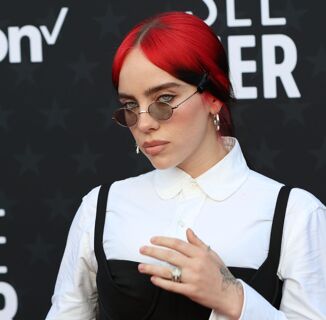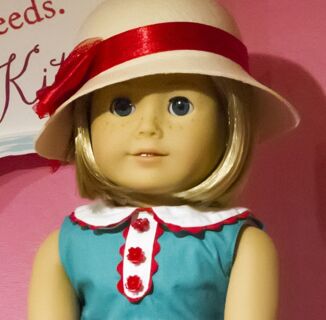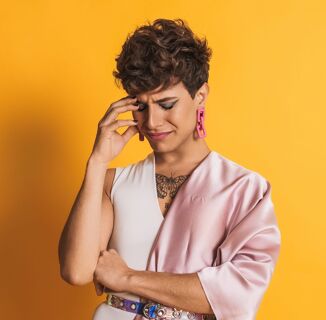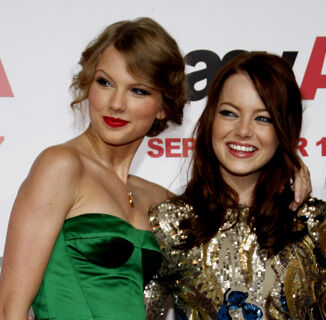My earliest memory of delighting in my own androgyny came inside a birthday party bounce house near the end of my time in elementary school. I climbed inside with what my mother had named a “pixie cut” but what my grandmother had derisively called “boy hair,” a sharp black leather jacket, and cuffed denim. Immediately, a little boy interrupted me to demand information about my gender in a way that only kids can: was I a boy or was I a girl? The question gave me the good kind of goosebumps. I was having my first confrontation with binary gender.
This, I would find out later on, is not an especially cis experience.
It may be surprising to learn that I didn’t have a serious talk with myself about gender again until I was almost thirty. I was hesitant even to call myself nonbinary at first, spending a few noncommital months wearing “she/they” buttons and avoiding the gender conversation altogether.
I climbed inside with what my mother had named a “pixie cut” but what my grandmother had derisively called “boy hair,” a sharp black leather jacket, and cuffed denim.
For me and for many of us in the queer community, the language we use to describe our experiences can be a source of anxiety. Worries about our own shifting understanding of ourselves invalidating us to other people, or even gatekeeping in our own communities, can discourage us from exploring terms that may make us feel more at home in ourselves. I, for the last few months, have had this relationship with the word “trans.”
I hadn’t even considered calling myself trans until I bumped into this concept in a book on genderqueer identity I’d brought along on a flight in early October. The author, who identifies as nonbinary, casually calls themself trans throughout the text, with the ease of someone who had not just thrown another person into a panicked identity crisis at 31,000 feet. As a nonbinary person, was I even “trans” enough to be trans?
Of course, what words mean matters. Language is shifting and changing around us at every opportunity, but words have definitions; it’s how we organize and understand the world. I always assumed that to be transgender meant to have gone through a “transition” from one binary gender to another. But this definition didn’t feel accurate or reflective or inclusive once I articulated it. Gender is a complex multidimensional intersection of presentation, expression, and identity, so it stood to reason that identifying as something other than my assigned gender at birth would mean that I was transgender. Even Monica Helms, the designer of the five-bar transgender pride flag, explained that the white stripe in the center of the design was for “those who are transitioning or consider themselves having a neutral or undefined gender.” So why didn’t I feel like I “deserved” to call myself trans?
Glossaries of terms within the queer community are often outdated, and lack the nuance and emotional usage that we see in our lived world. For my answer, I would just have to ask around.
So I did. I reached out not only to my personal nonbinary friends, but also to the author who gave me the identity crisis, a colleague who had lived in the world of queer language decades longer than me, and my 38,000 Tik Tok followers.
@justflintisfine I can’t wear this sweatshirt to school, so it’s an at-home treat for you #trans #nonbinary #enby #theythem #transmasc #queerdiscourse #lgbtq ♬ original sound – Flint
Here’s what I learned:
Kay
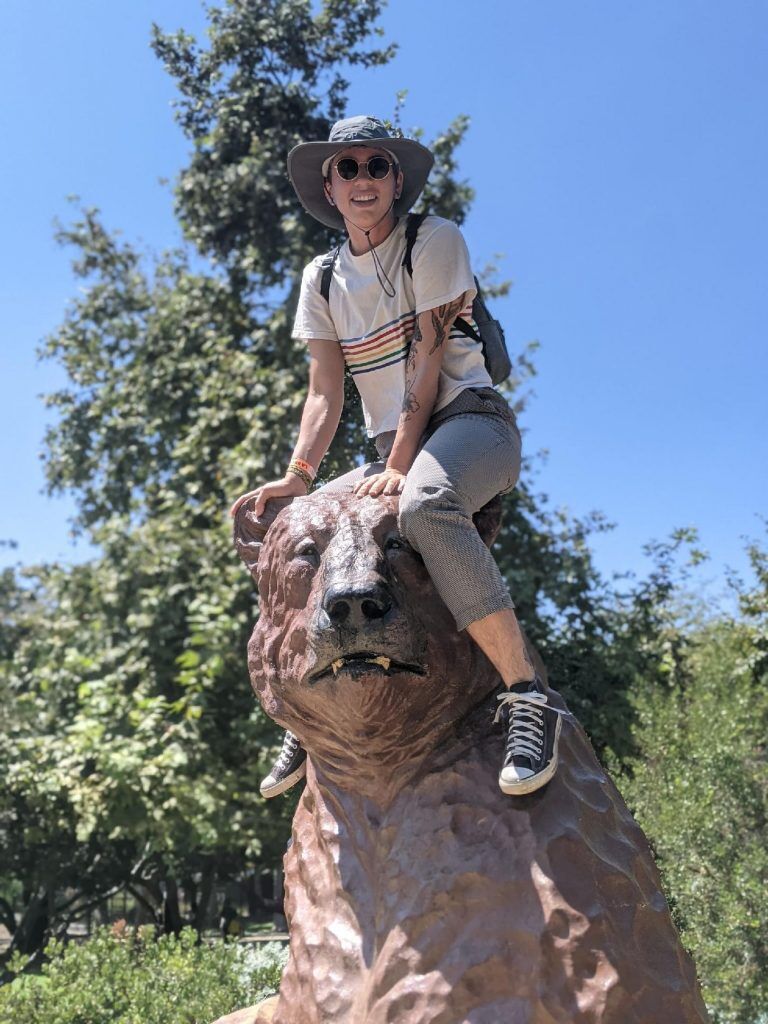
Kay (26, they/them), self-describes as a “queer pansexual nonbinary human/entity” and has been confident calling themself trans for a long time. “Some people might be hesitant because they think being transgender means going from one to the other, but that concept is binary,” they argue, “but I’ve always been this person, I just had to discover it within myself and transition to it, but it’s always been there.”
It’s easy to be confident and comfortable around Kay, and it’s affirming to hear them talk about their gender in such clear and assured terms. Unlike me, a person who found gender affirmation at the hands of a well-tailored vest and a patterned tie, Kay says that they know who they are in the most clear terms out in the wilderness, far from hot showers and binary expectations.
“Some people might be hesitant because they think being transgender means going from one to the other, but that concept is binary.”
“You can be more comfortable with yourself in outdoor communities,” Kay tells me. “You get to just go out and exist with the birds. No bird is going to look at me and say ‘Miss?’ What bird is going to misgender me?”
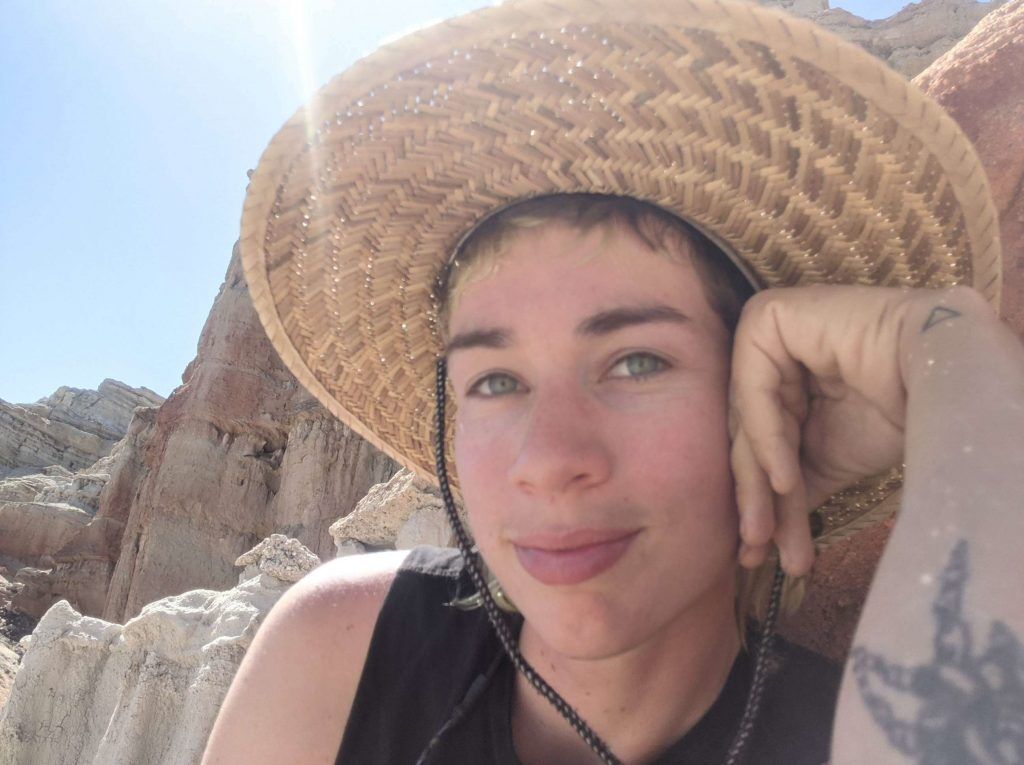
This perspective — of shirking off expectations and guidelines of gender set down by the fragile institutions of man — seems to be Kay’s central tenant of transness. The idea that had been clouding me, that I might not be trans “enough” to use that word for myself, they rejected outright: “Once you tell someone there’s no boundary, that there’s no ‘more or less’ trans, they can become more of themselves,” they tell me. “There’s no prescription, there’s no narrative you have to fill to be transgender.”
Ivy

Ivy (27, they/them), self-describes as a “queer Vietnamese nonbinary femme” who grew up in “Vietnamese-American limbo” when it came to their understanding of sexuality and gender, where the expectations of what it meant to be a woman within both cultures kept them from feeling entirely connected to their assigned gender at birth. They have felt alienated also, however, from the typical picture of nonbinary identity on websites like Tumblr.
“Most of the time I do not want to dress that way,” they say of the “short hair and tie” version of gender nonconformity that has become so popular online. “There are some people who think that being nonbinary but dressing femme is like ‘woman lite,’ but when I express myself more femininely, it’s not to subscribe to society’s expectation of femininity, it’s a comfortable and honest expression of my nonbinary self.”
“For a while, I felt like I didn’t identify [as] trans because I didn’t deserve it. I felt ‘not trans’ enough.”
Ivy challenges the common assumption that to be nonbinary is to be primarily masculine, especially for those of us assigned female at birth. “My femininity is fluid and ranges from hyperfeminine to some degree of masc energy,” they say. “Nonbinary identity opened up a lot of room for me to explore. I hope to break assumptions about what nonbinary looks like. If I look like a woman but I tell you I’m not, I hope to break your brain a little.”
So what’s their take on the use of “transgender” as a personal identifier?
“For a while, I felt like I didn’t identify [as] trans because I didn’t deserve it. I felt ‘not trans’ enough.” For Ivy, it’s an ongoing struggle, a case of imposter syndrome. “Trans feels like the pinnacle, something aspirational. I’m more open now to identifying as trans, but I’m still working on the idea that you have to completely change from one gender to another. I’m trying to change my mentality.”
Eris

Eris (29, they/them), is the cause of my original airplane gender crisis. The author of 2019’s nonbinary and genderqueer identity guide They/Them/Their, and an internationally-celebrated fiction writer, I tried to keep my cool when they answered my very chill DM on Instagram asking for some clarification on their position regarding trans language.
They explain that being “very online” as a queer Millenial, during a time of great linguistic change, meant that there was an abundance of confusion about what words would work for a community like ours. “There was a lot of transphobia, or even just plain incomprehension, and I think a lot of us carry that inside still,” they say. For them, “trans” takes a front seat to other descriptors, as they explain that what the term represents “very much fits with my experience and my values, the community I consider myself to be a part of, whereas nonbinary is more of a descriptor than an identity.”
And one of my fears, that I would never truly be transgender unless I had completed some kind of medical transition, was waved away early by Eris’s much larger definition:
“Trans is a broad church, and it’s about both the safe haven of understanding and shared lived experience, and political solidarity. If you feel trans fits your experience or if the community and language are useful to you, regardless of what you change or don’t change about your body and appearance, I say welcome!”
Robyn
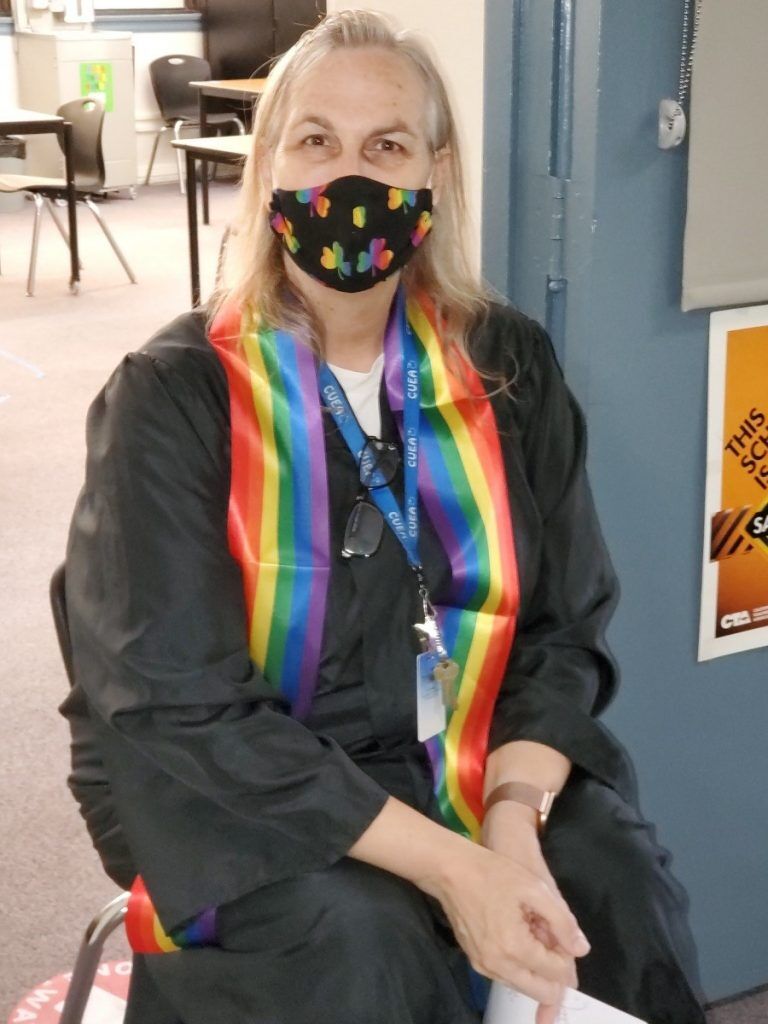
Robyn (61, she/her), is the only one of my interviewees who does not identify as nonbinary. When I ask her to give me an idea of how she would describe herself, it takes a while for her to come up with a satisfying list of words, but she finally settles on “Married lesbian, educator, and gamer.”
Her own experience with language and LGBTQ+ identity was shaped by a world that many of us in younger queer circles will never truly understand. A self-described “post-war generation baby” who went to high school in the deep south, her early encounters with words like “queer” were not of empowerment and community, but of persecution and fear. She explains that her earliest memories of encountering people like her were in situations of danger: a black trans woman tricked into sitting on thumbtacks in the classroom, a camp counselor accused of being homosexual, beaten and run out of the community.
A self-described “post-war generation baby” who went to high school in the deep south, her early encounters with words like “queer” were not of empowerment and community, but of persecution and fear.
“I saw it and felt complicit,” she says, “The experience keeps you from wanting to be out. [I was] trying to blend in.”
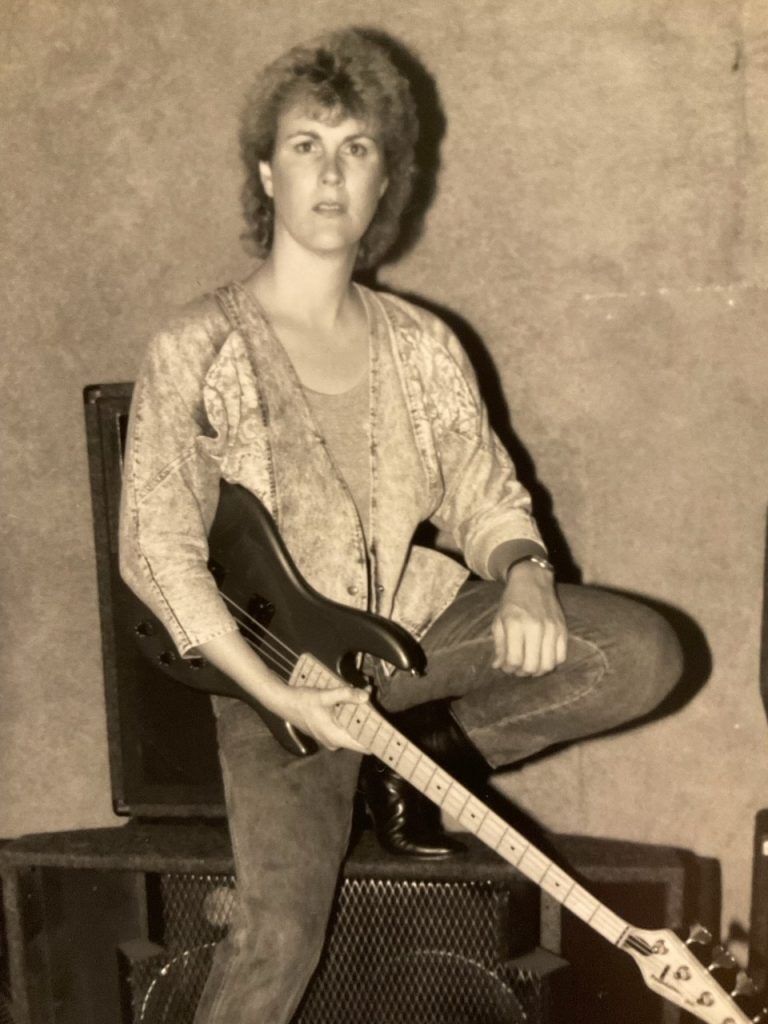
These moments have bled over into how Robyn now sees her own identity. Though she went through a gender transition when she was younger, she very rarely identifies herself as trans. “When I first heard it, the world transgender felt like the word queer: it’s an insult. I’ve gotten more comfortable with it in the last five years, but I used to blanch,” she says, explaining that her transition feels more like something she went through, a process that happened and then was left behind, than a current identity.
“People feel comfortable when they have labels for you,” Robyn argues, and though she is and has been active in the world of LGBTQ+ advocacy in her community since the 1980s, she says that the lowest priority for her is worrying what somebody calls themselves. “Support groups when I was coming out were led by transvestites, drag queens, and transsexuals. There was no transgender… If people want to use that word for themselves that’s fine, but if you start labeling everybody, it’s easier to pigeonhole them. You’re no longer listening to them.”
So Where Does That Leave Us?
I am trans.
Ultimately, I have feared adding words to describe my experience because I am worried about being “too much” for people. I am already exhausted correcting acquaintances when I get she/her’d, and I don’t correct strangers at all. Adding “transness” to my understanding of who I am feels heavy, and as Eris correctly pointed out, I am still likely carrying the weight of my own internalized transphobia.
My problem is that I have seen being trans as walking as quickly as possible across the hot coals of androgyny. What makes some people uncomfortable with the notion of nonbinary identity is that there’s no obvious place you’re transitioning to; there’s no goal or endpoint that will make cis people comfortable, no clearly defined cultural finish line. And I recognize completely that this is coming from a white and western view of gender, because that’s the box I was raised in and the one I’m trying to bust out of. But for me, for now, just challenging that is enough.
What I’ve really gleaned from this experience hasn’t been a clear-cut black and white outline for who can use these words, but that there is a profound value in asking and learning. “There is something to be said about having this conversation with someone who understands,” Kay says at the very end of our talk. “I don’t know what it is about this connection between nonbinary people, but it makes me feel safe and comfortable. I wouldn’t want to have this conversation with anyone else.”♦
Help make sure LGBTQ+ stories are being told...
We can't rely on mainstream media to tell our stories. That's why we don't lock our articles behind a paywall. Will you support our mission with a contribution today?
Cancel anytime · Proudly LGBTQ+ owned and operated
Read More in Culture
The Latest on INTO
Subscribe to get a twice-weekly dose of queer news, updates, and insights from the INTO team.
in Your Inbox

